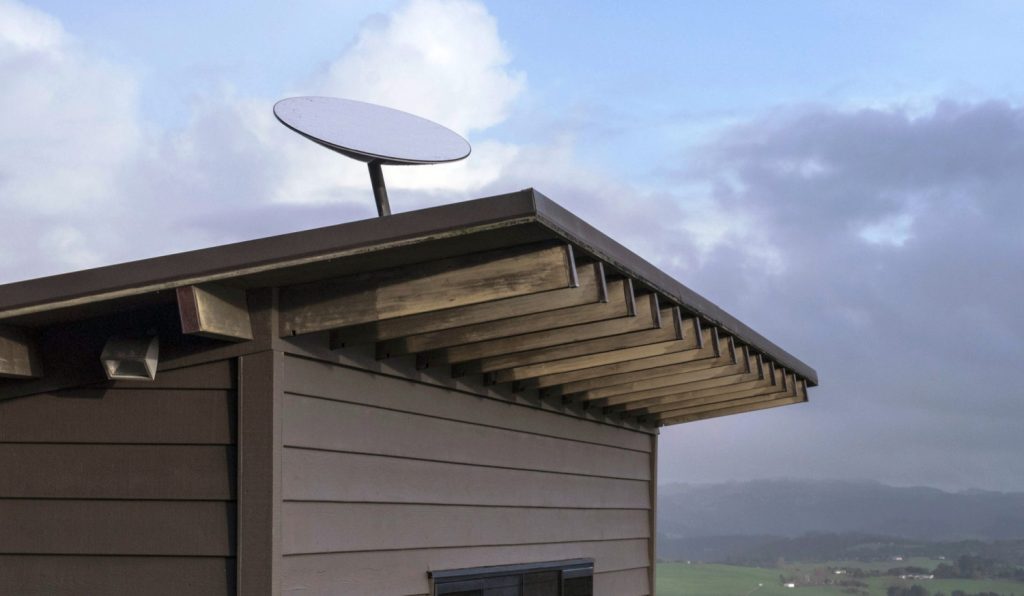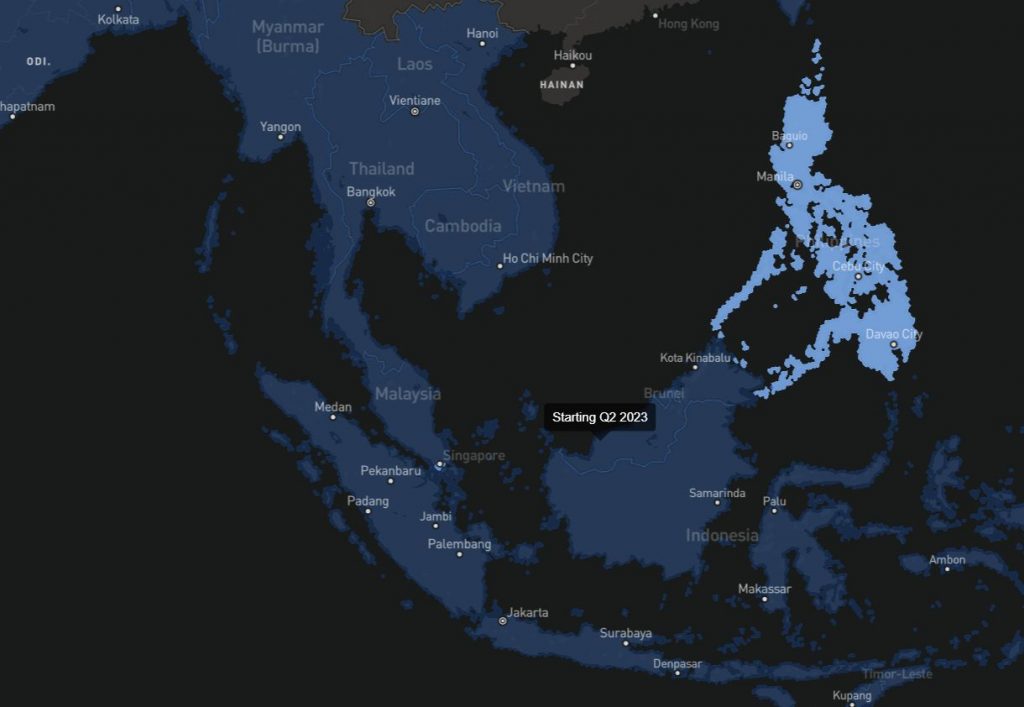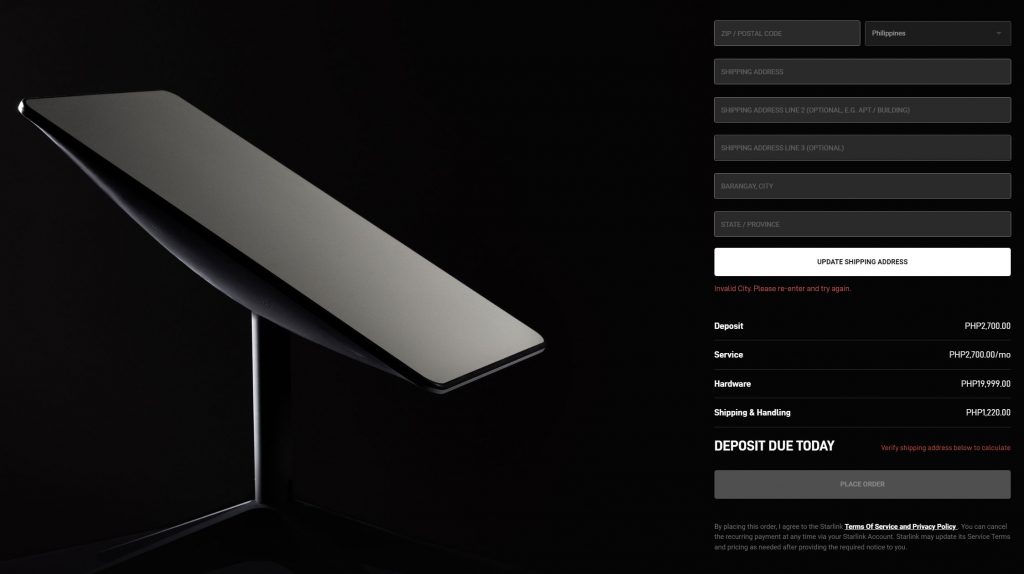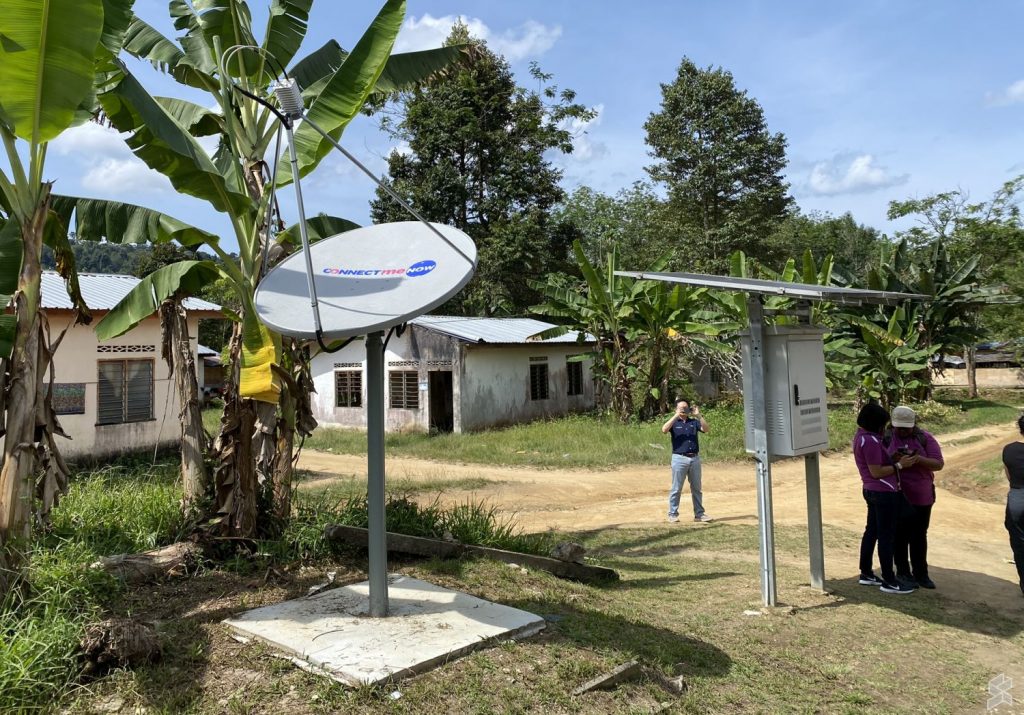Following a recent video conference meeting with Elon Musk last week, it was reported that Anwar wants the government to order 40 units of Starlink Satellite broadband kits for schools, colleges and universities across the country. Communications and Digital Minister Fahmi Fadzil said there are 3% of populated areas don’t have access to the internet and they have discussed Starlink’s participation in rural areas.

To recap, Starlink is a satellite broadband service of Space X which uses Low Earth Orbit (LEO) satellites. Not only it offers high-speed broadband, but the closer distance to Earth also allows a much lower latency than GEO satellites. As of the end of last year, they have launched in over 40 countries (mostly in the Americas) and have crossed the 1 million active subscriber mark. While having more satellite broadband providers is always welcomed, there are several questions about Starlink’s availability for the Malaysian market that need to be answered.
Masih ada 3% kawasan berpenduduk yang tidak mempunyai akses internet kerana masalah keluasan tanah dan beberapa isu lain di kawasan tersebut.
— Fahmi Fadzil 🇲🇾 (@fahmi_fadzil) July 14, 2023
Dalam sesi tadi, kami turut membangkitkan berkenaan penyertaan perkhidmatan satelit Starlink terutamanya di kawasan pedalaman. pic.twitter.com/KEN2ctHGrw
Is Starlink allowed to operate in Malaysia?

In order to provide services in Malaysia, Starlink must obtain the necessary Network Facility or Service Provider (NFP/NSP) licence. At the time of writing, we couldn’t find Starlink to Space X listed as a registered licence holder under the Malaysian Communications and Multimedia Commission (MCMC)’s database.
As we all know, using unauthorised devices or services not approved and certified by local regulators is an offence. For example, individuals caught using illegal communications devices can be fined up to RM500,000.
During former Minister and International Trade and Industry Datuk Seri Mohamed Azmin Ali’s visit to Space X last year, he shared that there are several matters that were still being considered by the government on Starlink’s policy-related proposal to introduce the internet service in Malaysia.
While it isn’t clear what policy-related matter this is, there’s a possibility that the company could be seeking 100% foreign ownership in order to set up operations in Malaysia. Malaysia currently has foreign investment restrictions on the percentage of shares a foreign entity can own as part of the licence conditions. Will Space X form a joint venture with a local partner or will Anwar’s administration waive the foreign ownership restriction for Elon Musk’s company?
As reported last year, Starlink has been collecting deposits of USD 99 from interested Malaysian users on their website despite not having the necessary licence to operate in Malaysia. The deposit amount has been reduced to USD 9 (about RM41). On its website, Starlink lists that it is coming to Malaysia in Q2 2023 but its services are still not available.
Starlink isn’t cheap

Before you get excited, take note that Starlink isn’t cheap and the pricing costs more than your typical fibre broadband service which is to be expected. Similar to wireless broadband, satellite broadband is a finite resource and Starlink also has its own Fair Usage Policy to ensure that the network can be accessed by as many people as possible.
The Philippines is Starlink’s first market in Southeast Asia and the subscription costs PHP2700 per month (about RM225). The Starlink satellite dish and WiFi router cost PHP19,999 (about RM1,663) and a shipping fee of PHP1,220 (about RM102).
What about local satellite service providers?

While it is easy to get excited about Elon Musk’s Tesla and Starlink arriving in Malaysia, let’s not forget there are local players in the satellite and space tech industry. Homegrown MEASAT is one of the dominant players at the moment which has made significant investments to launch MEASAT-3d and they are also going down to the ground to enable connectivity and digitalisation in unserved areas.
Launching a satellite is the easy part but the hard work is installing access points in hard-to-reach areas that don’t even have basic road infrastructure or electricity. MEASAT’s ConnectMe Now satellite service has been deployed at 4,000 locations without 4G and the new satellite has the capacity to connect 2 million underserved Malaysians with speeds of up to 100Mbps.
Recently, Angkasa-X has also launched its first LEO satellite and it aims to launch 500 units to cover 50% of remotely populated areas in the ASEAN region. Angkasa-X aims to form two LEO satellite constellations namely A-SEANLINK and A-SEANSAT.
[ SOURCE ]
Related reading
- Elon Musk’s Starlink satellite service to cover Malaysia in 2023 but should you place a USD 99 deposit today?
- Azmin Ali welcomes Elon Musk’s Starlink satellite service in Malaysia, negotiations are underway
- Starlink claims to have over 1 million active satellite broadband subscribers. When will it launch in Southeast Asia?
- Here’s how MEASAT and Parcel365 are digitalising unserved rural communities in Malaysia








